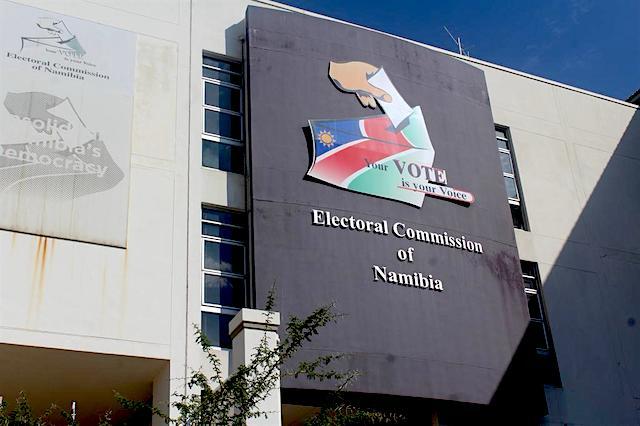Assessing the efficacy of a board constitutes a fundamental aspect of effective governance, and numerous corporate governance frameworks advocate regular evaluations of performance.
Specifically, the NamCode advises in Principle C2 to 22 that assessments should be conducted to gauge the effectiveness of the board and its directors.
Similarly, as per the Public Enterprises Governance Act of 2019, it is mandated that performance agreements be periodically reviewed by the relevant minister.
However, despite the growing emphasis on evaluations, board assessments are failing to fulfil their promise of enhancing board effectiveness.
In Namibia, several public enterprises continue to underperform even after conducting board evaluations.
This circumstance underscores the necessity of re-examining the reasons behind the failure of board evaluations to improve effectiveness.
Interestingly, throughout history the act of evaluation has consistently held significant importance in the lifespan of both systems and living things, rendering it an intriguing subject of study.
Human beings employ evaluation as a means to reach informed decisions, while organisations utilise it to assess their endeavours and enhance performance. Without the indispensable elements of evaluation and feedback, individuals and entities would struggle to progress and refine themselves.
Thus, evaluation emerges as a vital component within the equation of development. Ralph Tyler, widely regarded as a pioneer of modern evaluation theories, provided a definition that perceives evaluation as the process of assessing something against a set of predefined standards.
In a similar vein, Michael Scriven, a British philosopher renowned for his creation of the ‘Evaluation Thesaurus’, offered a concise definition of evaluation as the process of determining whether a specific objective has been achieved.
Remarkably, both definitions highlight evaluation as a process, suggesting that it comprises several distinct activities that seamlessly intertwine.
HOW DO WE DO THIS?
To illustrate this concept, Scriven and Fournier proposed a four-stage sequence to delineate the evaluation process.
Stage 1: Involves the establishment of evaluation criteria and the corresponding metrics.
Stage 2: Entails the identification of standards that govern the performance associated with the tasks.
Stage 3: Revolves around the empirical measurement of performance.
Stage 4: Culminates in deducing a conclusion regarding the merit of the task.
When scrutinising the evaluation logic of Scriven and Fournier in the context of corporate governance in Namibia, a dual challenge becomes evident.
Firstly, although the NamCode and the Public Enterprise Governance Act establish standards and legislative provisions, they do not present a comprehensive set of evaluation criteria.
Secondly, both instruments remain silent regarding methodologies of conducting evaluations.
Consequently, while individuals may possess a clear understanding of what ought to be evaluated, they may lack clarity in defining the metrics and benchmarks that form the basis for making judgements.
An analysis of the board evaluation tools currently in use revealed that most consultants hired to conduct board evaluations, use templates and questionnaires grounded on recommendations by Kiel, Nicholson and Barclays.
Of particular interest, Kiel, Nicholson and Barclay’s recommendations provide a step-by-step approach on how to conduct board evaluations and for example recommend the use of the following questions when evaluating the performance of board members.
Has X been attending meetings regularly? Does X appear to dedicate sufficient time and attention to his/her responsibilities? Has X consistently received proper briefings regarding the matters to be discussed? Does X bring relevant expertise to the board and effectively utilise it?
Are X’s contributions to board discussions concise and pertinent? Do X’s contributions carry influence among his/her colleagues? Does X fulfil his/her fair share of committee work, and are his/her contributions valuable to the committee?
Does X have any actual or potential conflicts of interest?
By adopting the aforementioned approach to evaluations, a scenario emerges wherein a one-size-fits-all paradigm is established, which presents certain predicaments primarily for two distinct reasons.
Firstly, such an approach advocates a compliance-based methodology, whereby individuals are restricted to working within predefined variables outlined in a specific checklist.
Consequently, this inevitably results in superficial tickbox assessments.
Although tickbox assessments are widely acknowledged as formal assessment methods, their limitation lies in their tendency to treat respondents with a uniform ideology.
The second issue arises from the fact that this approach evaluates individuals solely on their actions, neglecting their potential. Consequently, these evaluations fail to gauge missed opportunities.
IS THAT SUFFICIENT?
The prevalence of issues pertaining to missed opportunities is notable. Frequently, boards tend to forgo potential opportunities due to their adherence to principles of good governance.
A noteworthy instance is observed when boards are deemed to be performing admirably by assessing the risk profiles of their enterprises before making decisions.
Consequently, investments that lie beyond the purview of the risk profiles are often dismissed. Nevertheless, our historical records are replete with instances where boards rejected ventures fraught with risk, only to witness their subsequent evolution into billion-dollar success stories.
CONSIDER THESE EXAMPLES
The following case studies serve as compelling illustrations of this phenomenon.
In 1876 the board of Western Union rejected investing into the idea of developing a telephone. One internal memo read
“This ‘telephone’ has too many shortcomings to be seriously considered as a means of communication. The device is inherently of no value to us.” – Western Union internal memo dated 1876.
At the end of the year, board evaluations indicated that the board got high ratings and was seen to have performed well.
In another case, during the late 1930s, Chester Carlson’s idea of developing a Xerox Photocopying Machine was turned down by over 20 different boards. Interestingly, in the middle of 1940, one rejection letter read “Who the hell wants to copy a document on plain paper?”
It is widely documented that even the National Inventors Council rejected the idea. Noticeably, annual evaluations of the functions of the National Inventors Council concluded that management had done a good job throughout the year.
In yet another case, Larry Page and Sergey Brin approached George Bell, the chief executive officer (CEO) of Excite company with the idea of selling Google for one million dollars.
The CEO rejected the offer. Despite this rejection, the CEO still went on to receive good performance appraisals. But today Google is one of the world’s biggest success stories.
In all the scenarios above, management and directors received good evaluation appraisals despite missing out on billion-dollar investments.
THE PUZZLE
From this analysis, two key questions emerge. When people leading our enterprises comply with good governance principles and yet miss great business opportunities, can we still say they are performing well? And, how can our evaluation methods be structured so that they provide holistic assessments of the board?
The answer to these questions could be embedded within the philosophy of purpose. Elliot Stern, a staunch advocate
of evaluation studies, emphasises the significance of initially defining the purpose behind conducting an evaluation.
In certain scenarios, evaluations are designed to gauge compliance, whereas in other circumstances, their purpose is to conduct appraisals. Misinterpreting or interchanging these two objectives can potentially result in erroneous conclusions.
Different evaluation approaches should be employed to assess diverse attributes encompassing the functional, structural and social dimensions of systems.
Consequently, attempting to employ a universal approach might prove futile. Additionally, it is inappropriate to choose an evaluation method solely for its convenience.
THE BOTTOM LINE
Although a compliance-based evaluation can be conveniently conducted using checklists and tickbox assessments, employing such an approach to evaluate structural or social constructs may yield inaccurate outcomes.
This final observation could elucidate the disparities observed between the results of board evaluations and the performance of public enterprises in Namibia.
In conclusion, it is worth noting that Gary Kasparov, the former World Chess Champion, once said, “to be good at something, you need to be able to follow laid-down standards. However, to be exceptional at something, you need to know when to violate the standards”.
Arguably, adopting a compliance-based mindset steers a board towards a realm where it is regarded as commendable and functioning effectively. However, a positive assessment of the board does not guarantee superior performance for the enterprise. True excellence may require departing from conventional practices.
Fortunately, NamCode embraces an “comply or explain” approach, which undeniably permits deviation from established norms and paves the way for enterprises and boards aspiring to excel and achieve exceptional status.
As a nation, it is imperative that board evaluators of public enterprises transcend mere compliance and tickbox evaluations, embracing a more comprehensive and discerning approach.
- Magreth Shilunga is a chartered development finance analyst and holds a master of philosophy degree in development finance from the University of Stellenbosch Business School.
Stay informed with The Namibian – your source for credible journalism. Get in-depth reporting and opinions for
only N$85 a month. Invest in journalism, invest in democracy –
Subscribe Now!








